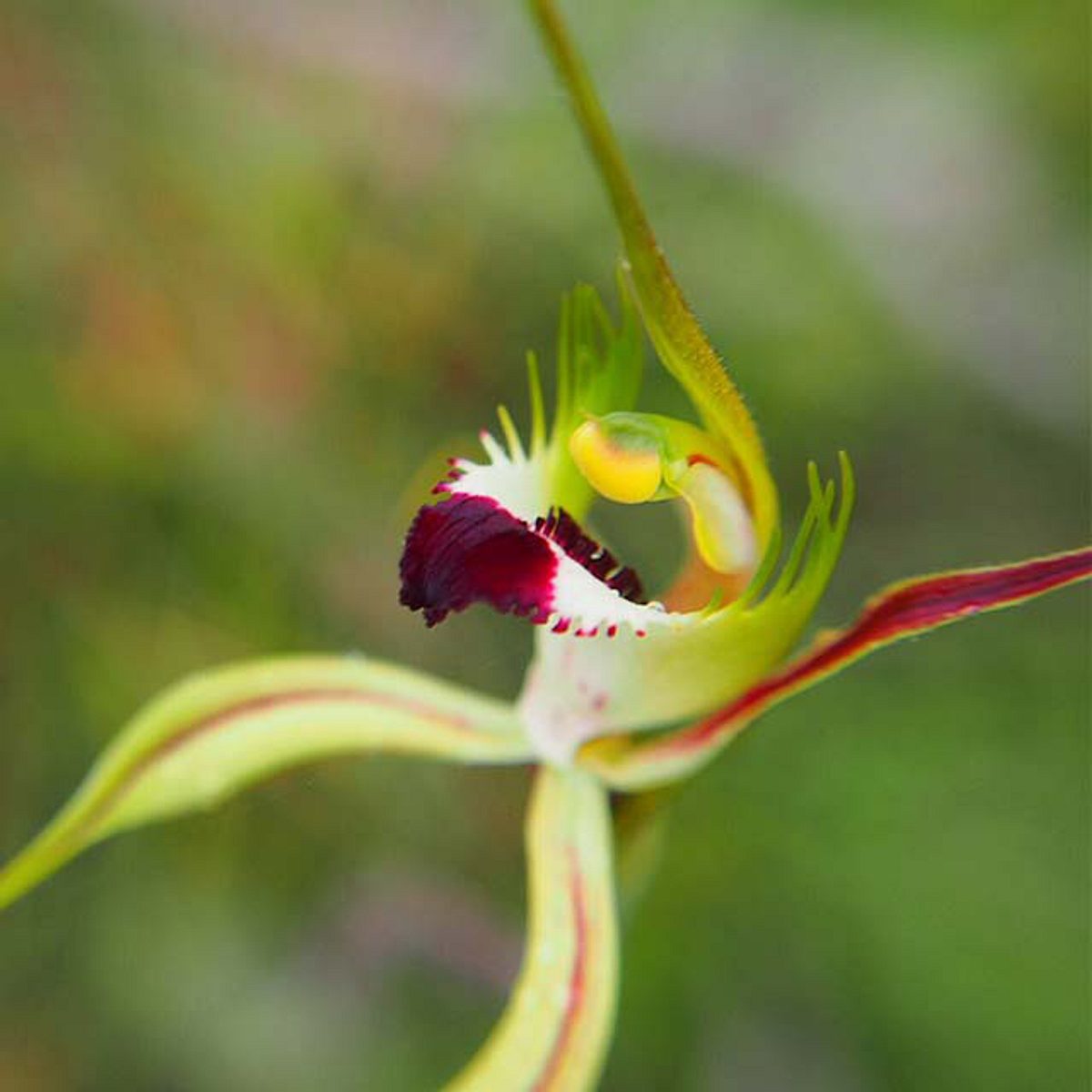


For more than 20 years the team a our SA Seed Conservation Centre have been developing an incredible knowledge of South Australian Flora.
They have uncovered many new populations of threatened flora but have also been involved in the discovery of new species.
Increasingly, the team are also involved in collecting data to inform the process of assessing the status of threatened species. They survey existing known populations and search suitable habitat for new populations.
Having current population data is crucial to the process used to determine which plant species are threatened in the State, and guides the conservation priorities for flora.

An emerging focus of the Seed Centre is using the seeds from long-term storage in projects that conserve threatened species.
The team has grown many threatened species for reintroduction into the wild to boost population numbers.
One of the exciting techniques used is in-vitro symbiotic germination of orchids. Due to their complex biology and ecology, orchids represent over 75% of our threatened species.
The team isolates soil fungus from wild plants, grow the fungus on sterile media, and then use it to germinate orchids in a symbiotic relationship with the fungus. To date, over 15 endangered species have been grown by the team.

Several projects for bushfire recovery work have created an opportunity to secure fire responsive species in the seed bank, with a focus on the long-term preservation of the iconic flora of Kangaroo Island.
There were more than a three hundred scientific specimens collected, predominantly threatened species and poorly recorded species.
This includes six new species records for Kangaroo Island plus collections for some species not historically recorded for more than eighty years.
There were over eighty seed collections for high priority species, for multiple populations where possible. This includes seed collections for 27 rare, 11 vulnerable and 6 endangered species.
The rapid assessment of the post fire recovery of native flora was undertaken by the herbarium team, who surveyed of the status of species and their recovery mechanisms across as many sites as possible. This included data capture of more than 2300 herbarium specimens including native, endemic and rare orchids, lichens, endemic plant species, eucalypts and weeds.

Leporodia valliculae in flower - SA Seed Conservation Centre
These surveys augment other ongoing collections of flora recovering from the intense fires by the SA Seed Conservation Centre and other community groups, including Nature Conservation Society of South Australia, the Kangaroo Island Landscape Board and the Department for Environment and Water (DEW).
The uncontrolled bushfire of 2019/20 in the Mount Lofty Ranges burnt through 25,000 hectares in the Cudlee Creek region.
Within this region there were small fragments of remnant vegetation that contained the nationally vulnerable Clover Glycine (Glycine latrobeana) as well as other significant threatened plant species. Fortunately there had been seeds banked by the South Australian Seed Conservation Centre (SASCC) of this species from both within the area of the burn and from a larger population at the Mount Bold Reservoir Water Reserve for future use.
These seeds had been lodged with our partners, the Millennium Seed Bank (MSB) run by the Royal Botanic Gardens–Kew in 2009. The SASCC team requested a subsample of these seeds (250 of 1200) to be returned to Adelaide for restoration actions. In August 2020 and 230 plants were propagated for planting back into the fire scar in 2021 and for establishment in the seed production area at the Adelaide Botanic Gardens.
By February 2021 nearly 800 seeds were harvested from the seed propagation area plants to be used for ongoing recovery work and repopulating the fire scar area with this threatened South Australian plant species.

Glycine latrobeana flowers, SA Seed Conservation Centre.
An example of large scale habitat restoration we support is the restoration of aquatic plants in restoring the Coorong.
The Coorong is a wetland of local, national and international importance and long term has been one of the most significant water-bird habitats in the Murray-Darling system. Long-term decline of the Coorong ecosystem has occurred exacerbated by the Millennium Drought.
The aquatic plant community of the Coorong, in particular hyper-salinity tolerant species of seagrass Ruppia tuberosa, Althenia cylindrocarpa and Ruppia megacarpa, are keystone species in the maintenance of the ecological functions of this ecosystem.
The majority of the Ruppia dominated aquatic plant community were lost during the extreme conditions of the millennium drought (2001–2010) where even the long term seed banks of Ruppia tuberosa were largely depleted.
A project led by the BGSH Chief Botanist Michelle Waycott has been working on the characteristics of the aquatic plants and algae that currently survive in the Coorong to work towards whole of system restoration and the recovery of the ecological functions of the Coorong South Lagoon.